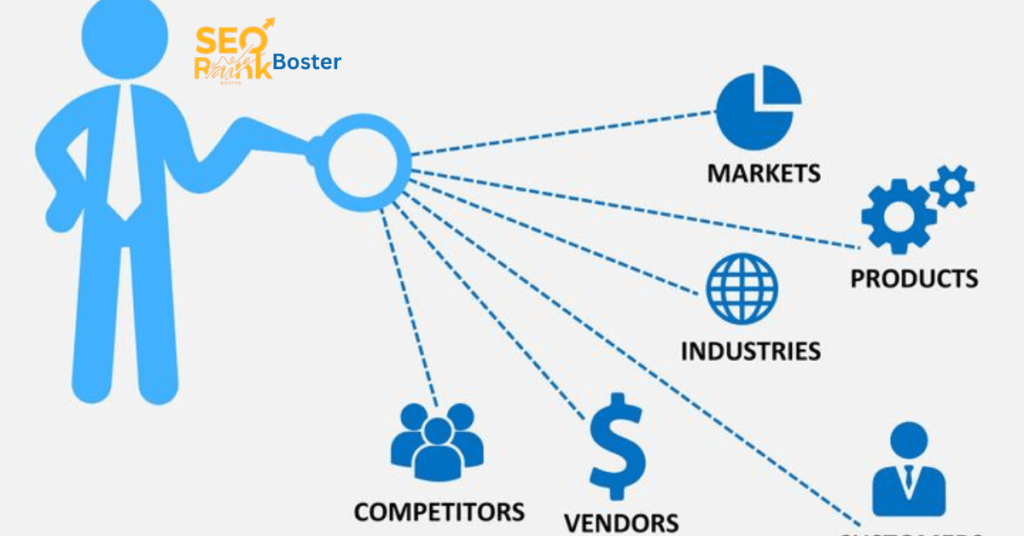Table of Contents
ToggleIntroduction
The Importance of SEO Competitor Analysis, Analysing your competition’ Search Engine Optimization techniques is critical for know-how marketplace dynamics and enhancing your online visibility.
Objectives of Search Engine Marketing Competitor Analysis
Outlines the primary dreams of carrying out a competitor analysis, which include figuring out keyword possibilities, knowledge content strategies, and assessing backlink profiles.
Setting the Foundation
Defining Your Competitors
Helps you determine who your real competitors are, together with direct, oblique, online, and offline competitors.
Tools for Search Engine Marketing Competitor Analysis
Lists and in short describes diverse equipment that can resource in competitor analysis, which includes Ahrefs, SEMrush, Moz, and Google Analytics.
Identifying Competitors
Direct Competitors
Discusses businesses that offer similar products or services and directly compete with you in the market.
Indirect Competitors
Covers businesses that might not offer the same products but still compete for the same audience or keywords.
Online and Offline Competitors
Explains the importance of considering each on line competition (those competing in search engines) and offline competition (the ones impacting market proportion).
Keyword Analysis
Identifying Competitor Keywords
Shows how to use tools to discover which keywords your competitors are ranking for.
Analyzing Keyword Gaps
Teaches you the way to discover key phrases your competition rank for that you do not, revealing possibilities to target.
Keyword Difficulty and Search Volume
Discusses evaluating the difficulty and search volume of keywords to prioritize your targeting efforts.
Content Analysis
Content Strategy of Competitors
Examines the types of content your competitors are producing and their strategies behind them.
Top Performing Content
Helps identify which pieces of content are driving the most traffic to your competitors’ sites.
Content Gaps and Opportunities
Look for topics that your competitors have not covered or have covered inadequately, presenting opportunities for you.
Backlink Analysis
Importance of Backlinks
Explains why one-way links are essential for search engine optimization, signalling to engines like Google that your content is valuable and sincere.
Analyzing Competitor Backlinks
Shows the way to use gear to research the backlink profiles of your competitors.
Identifying Link-Building Opportunities
Helps you find websites that link to your competitors but not to you, and strategies to gather those links.
On-Page Search Engine Marketing Analysis
Title Tags and Meta Descriptions
Analyzes how competitors optimize their identify tags and meta descriptions for keywords and click-on-through quotes.
URL Structures
Discusses the importance of URL structure for SEO and the way competitors are structuring their URLs.
Internal Linking Strategies
Examines how competitors use internal linking to improve website navigation and SEO.
Technical SEO Analysis
Site Speed and Performance
Evaluate competitors’ website velocity and performance the usage of equipment like Google PageSpeed Insights.
Mobile Friendliness
Check how nicely competitors’ websites perform on cell devices.
Indexability and Crawlability
Ensures competitors’ websites are effortlessly indexable and crawlable via engines like Google.
User Experience (UX) Analysis
Site Design and Navigation
Look at the layout and navigation of competitors’ websites to see what works properly and what doesn’t.
Engagement Metrics
Examines metrics like jump charge, common session duration, and pages in line with consultation to gauge user engagement on competitors’ websites.
Social Media Presence
Social Media Strategies
Analyzes your competition’s social media strategies and their effectiveness.
Engagement and Followers
Looks at the number of fans and engagement rates on unique social media structures.
Content Distribution
Understands how competitors distribute their content material on social media to force traffic and engagement.
Measuring Success
Setting Benchmarks
Use your competitor evaluation to set realistic benchmarks on your SEO efforts.
Tracking Progress
Regularly track your development in opposition to those benchmarks to make sure you are on the right path.
Case Studies
Successful Competitor Campaigns
Studies a success campaigns run by way of your competitors and learns from their techniques.
Lessons Learned
Identifies what laboured and what didn’t to your competitors’ campaigns to inform your very own strategies.
Expert Insights
Interviews with search engine marketing Experts
Gathers insights from search engine marketing professionals on first-class practices for competitor analysis.
Industry Trends
Stay updated on the contemporary tendencies in SEO to keep your strategies relevant.
Conclusion
Summary of Key Points
Recaps the main points covered in the article, emphasizing the significance of a thorough competitor evaluation.
FAQs
What is an SEO Competitor Analysis?
Defines SEO competitor analysis as studying your competition’ search engine marketing strategies to perceive strengths, weaknesses, opportunities, and threats.
Why is search engine marketing Competitor Analysis Important?
Explains how know-how works for your industry lets you improve your very own search engine optimization method.
How Often Should I Conduct an search engine optimization Competitor Analysis?
Suggests carrying out an analysis often, as a minimum as soon as every six months, or whenever there are tremendous modifications in your industry or search engine marketing landscape.
What Tools Can I Use for Search Engine Optimization Competitor Analysis?
Lists famous equipment which includes Ahrefs, SEMrush, Moz, and Google Analytics which could resource in the evaluation.
Can I Conduct an SEO Competitor Analysis on My Own?
Affirms that with the proper tools and expertise, you can exami

